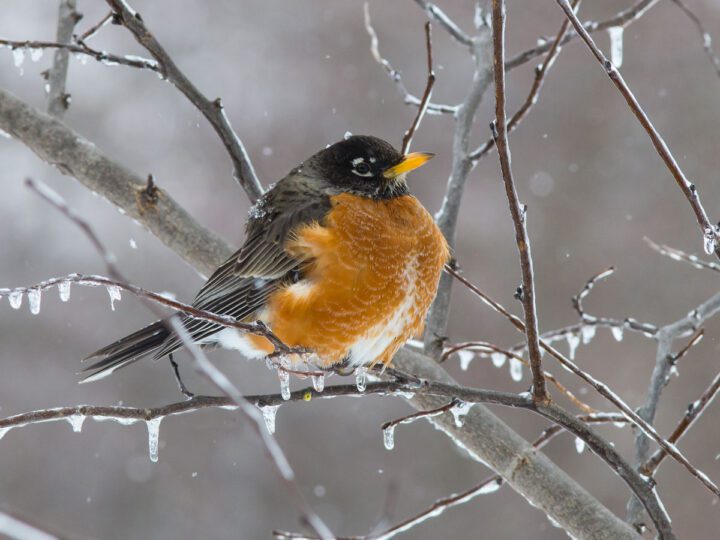Is it unusual to see American Robins in the middle of winter?

We do get a lot of questions from people surprised by seeing American Robins in winter. But although some American Robins do migrate, many remain in the same place year-round. Over the past 10 years, robins have been reported in January in every U.S. state, except Hawaii, (see map) and in all of the southern provinces of Canada.
As with many birds, the wintering range of American Robins is affected by weather and natural food supply, but as long as food is available, these birds are able to do well for themselves by staying up north.
One reason why they seem to disappear every winter is that their behavior changes. In winter robins form nomadic flocks, which can consist of hundreds to thousands of birds. Usually these flocks appear where there are plentiful fruits on trees and shrubs, such as crabapples, hawthorns, holly, juniper, and others.
When spring rolls around, these flocks split up. Suddenly we start seeing American Robins yanking worms out of our yards again, and it’s easy to assume they’ve “returned” from migration. But what we’re seeing is the switch from being nonterritorial in the winter time to aggressively defending a territory in advance of courting and raising chicks. This behavioral switch is quite common in birds.
You can report your robin sightings (and any other birds you see) at eBird. Read more about American Robins in our All About Birds Species guide.

All About Birds
is a free resource
Available for everyone,
funded by donors like you
American Kestrel by Blair Dudeck / Macaulay Library
